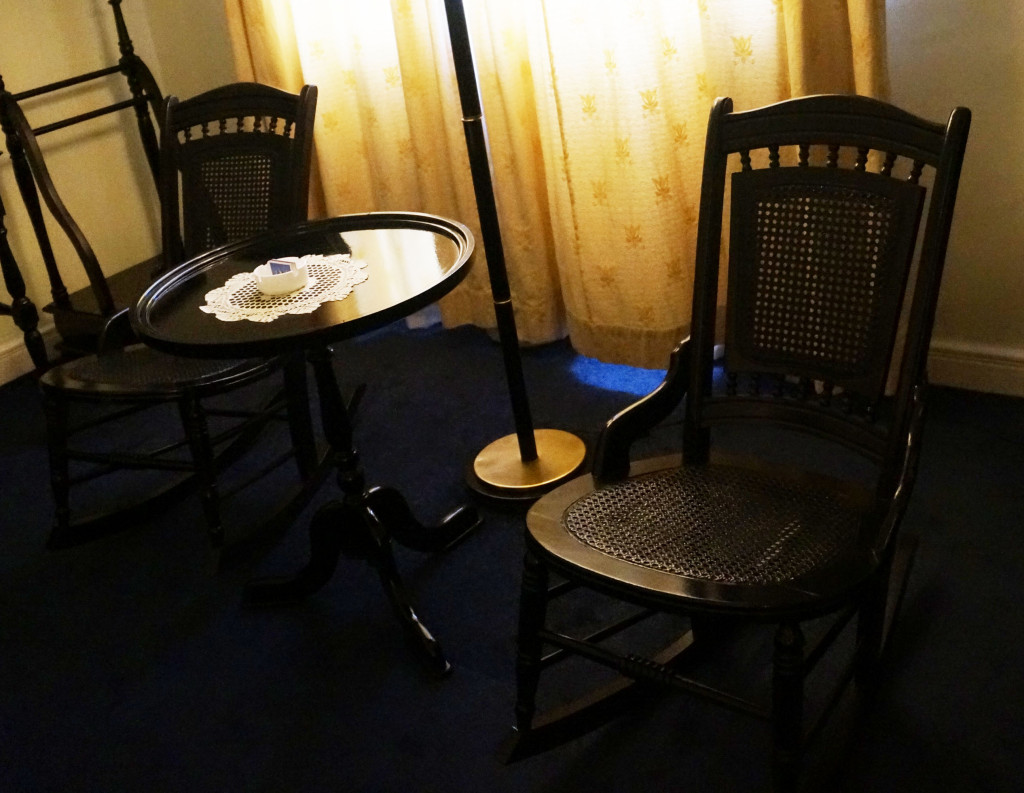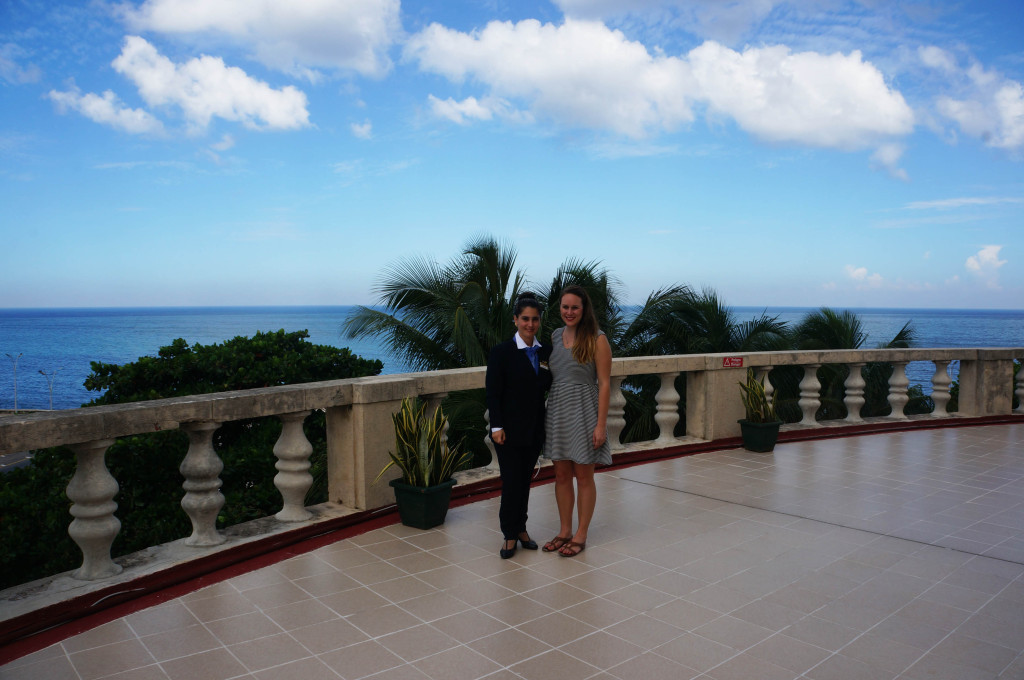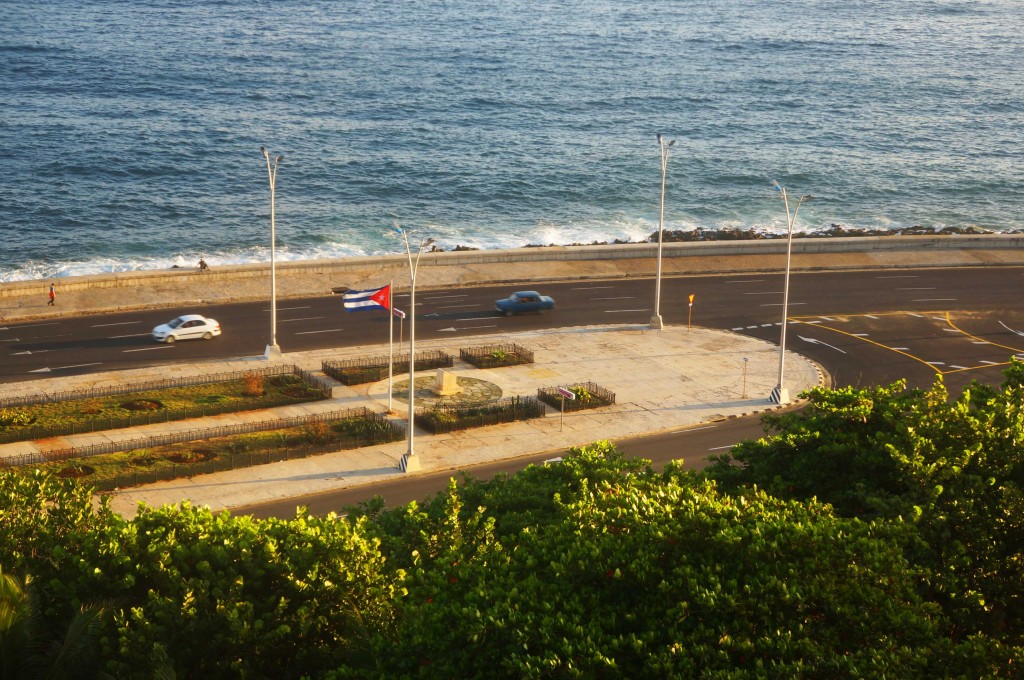
A Walk Through History at the Hotel Nacional de Cuba in Havana
In the soft heat of a Havana morning, I trot up the steps at the Hotel Nacional de Cuba. As I reach the top stoop, the doors gently breeze open and I enter the lobby. A world of the past awaits.
Grand chandeliers deluge the sharp white walls with light and the tile floors glisten beneath my feet. Mahogany furnishings adorn the space and brass fixtures provide the final touches on the sense of time and space preserved here.
I shuffle through the lobby and am greeted by the bright smiles of Fidelito González Padrón, Sales Director, Raúl Rodriguez, Public Relations Director and Aeleen Ortiz, Historian. The energy of this cheery trio is contagious; their warm demeanor my first lesson in Cuban hospitality.
Hotel Nacional de Cuba: A Beacon for Culture and History
A national monument, the Hotel Nacional de Cuba is a beacon for Cuban history as well as culture. It is a widely celebrated fact that only Cubans work here.
“We are 100 percent Cubana,” Aeleen tells me. “The hotel holds the great values of our culture.”
Yet the hotel did not have such beginnings. Opened as the National Hotel of Cuba on December 30, 1930, the hotel was built and operated by Americans as a hotel for American tourists. When the hotel first opened, no Cubans were allowed to stay here.
The hotel was designed by the prestigious architectural firm McKim, Mead & White, which also designed such iconic buildings as Columbia University in New York City and the Boston Public Library. The hotel has a similar architectural design to The Breakers in Palm Beach, Florida. Both hotels look nearly identical from the outside.
Famous Guests Flock to the Hotel Nacional de Cuba
The Hotel Nacional de Cuba boasts a long list of famous guests including Gary Cooper and Erroll Flynn in the 1930’s, Fred Astaire, Rita Hayworth, and Cantinflas, an actor from Mexico’s Golden Age of Cinema in the 1940’s, and Marlon Brando, Frank Sinatra, Ava Gardner and my personal hero, Walt Disney in the 1950’s.
Following the Cuban Revolution in 1959, the hotel shifted its focus to accommodate friends of the revolution including Yuri Gagarin, the first man in space, and Gaberiel García Márquez, author of Love in the Time of Cholera.
In more recent years, as tourism has been off limits to most Americans, the hotel has hosted a wealth of diplomats and world leaders, including Vladmir Putin, President of Russia, Evo Morales, President of Bolivia, Mahmoud Ahmadinejad, former President of Iran, and Xi Jinping, President of China. Former President Jimmy Carter also stayed here and US Secretary of State John Kerry paid a visit in August 2015 during his trip to reopen the Embassy.
Despite the United States’ ban on tourism, Hollywood elite have always seemed to find their way here, especially since the hotel began hosting a cinema festival in 1979. More recent guests have included Steven Spielberg, Leonardo DiCaprio, Danny Glover, Francis Ford Coppola and Michael Keaton. British models Naomi Campbell and Kate Moss also stayed here in the 1990’s.
A list of the rooms famous guests stayed in is available at the front desk and several rooms are even named after their most recognized occupants.
Authentic Cuban Style
Today the hotel retains a 1930’s Cuban style. The lobby ceiling is adorned with a hand-painted plaster that looks like wood. The lobby tile is original, featuring symbols from the Catalonia, Granada and Castile and León, the Spanish regions with the most commercial influence in Cuba. Most of the wood workings in the lobby, including original mail slots, were carved from Cuban mohagany, and the large hall contains four clocks that date back from 1897.
Near the elevators is an original brass hotel letter box made in Rochester. There’s a myth that this area is also haunted by ghosts, as the hand indicating the elevator’s floor level appears to move by some fantastical force.
Aeleen explains that the hands are actually operated by a hidden, old-fashioned mechanical system.
“Do you want to know the secret to see the ghosts,” she asks. “It’s one mojito, two mojitos, and then you fall on the floor and see the ghosts.”
The most luxurious restaurant at the hotel is Comedor de Aguiar, which serves international cuisine as well as the favorite dishes of some of the hotel’s most famous guests including Johnny Weissmuller, an actor most famous for playing Tarzan in a series of films in the 1930s and 1940s. Live piano adds to the upscale ambiance. Chefs at the hotel made the menu by interviewing old wait staff who served the stars their favorite meals.
The Presidential Suite
From the lobby, Aeleen and I take the elevator one floor up to tour the prestigious presidential suite. I am very excited to learn that Leonardo DiCaprio is among the long list of famous guests who have stayed in the suite. The two bedroom suite comes with two bathrooms, a dining room, sitting room and an office that has the same furniture that Winston Churchill used during his stay in 1945. Near the end of World War II he was invited to Cuba by the government.
The bedrooms feature a set up of two rocking chairs and a breakfast table. This set up was very typical in Cuban homes in the 1930’s. It is a tradition for Cuban abuelitas, or grandmothers, to rock their grandchildren in such chairs, and breakfast tables provide the perfect space to serve visitors another Cuban tradition – coffee.
The most impressive feature of the suite is the large terrace that overlooks the Malecón, Havana’s famous esplanade that overlooks the Gulf of Mexico, known locally as “the longest sofa in the world.”
The terrace also provides views of the hotel Habana Libre. Prior to the Cuban Revolution this hotel belonged to the Hilton family. After the revolution, private businesses were prohibited and all companies were nationalized. Aeleen informs me that Paris Hilton recently stayed in this suite and took a photo on the terrace with her grandfather’s former hotel in the background.
The Former Casino
From the presidential suite, we make our way down to the area of the hotel that once housed a casino. Prior to the Cuban Revolution, Havana was a hotspot for gambling, prostitution and other illicit activities. In the 1940’s, members of the corrupt Batista regime would meet with American business men here.
The Mafia also had a huge presence in Cuba, and the casino here served as the setting for the Havana Conference, a meeting between the American and Sicilian Mafia in 1946. This meeting is mentioned in the film The Godfather Part II, however the actual scenes were filmed in the Dominican Republic.
After the Cuban Revolution gambling was made illegal and all casinos were shut down. The hotel’s name was also converted from English to Spanish.
“There was a reversal of what things were like in the 50’s,” explains Aeleen.
This reversal came with many benefits for the people of Cuba, including universal health care, free education and more equality. In a place where prostitution once ran rampant, women and people of color especially have more options in today’s society.
“Today the women in Cuba are very equal,” she adds.
Aeleen and I step out into the garden and are flooded with bright sunshine. We walk past cozy enclaves with bars, couches and chairs, and make our way to the edge of the garden.
“When you take a picture here there is no doubt that you are in Havana,” she says as we look out at the sea and the classic cars that zoom along the Malecón. A Cuban flag flaps boldly in the wind and the outline of la Habana Vieja, the city’s historic center, shines in the distance. Florida is just 90 miles away.
Spanish Influences in Cuba
As we gaze out at the ruins of Morro Castle, a fortress that guards the entrance to Havana Bay, Aeleen and I step back further in time to discuss Spanish influences in Cuba.
Christopher Columbus reached Cuba on his first voyage to the New World in 1492. In 1511 the Spanish began setting up establishments on the island and used it as a base for trading slaves beginning in 1526. In 1762 British forces captured Cuba, however it was returned to the Spanish in exchange for Florida in 1763.
Due to its strategic location in the Gulf of Mexico, Cuba was Spain’s most important colony. The hotel sits in a neighborhood called Vedado, which means “prohibited.” During the Spanish rule this area was a forest, and it was prohibited for anything to be constructed here in fear that it would make the land more susceptible to pirates.
In 1898, the United States defeated Spain in the Spanish-American war and gained control over Cuba. It was from this point on that many American businesses set up in the island and gambling and prostitution became big business.
Aeleen smiles at me. “To know the story of the hotel is a summary of the history of Cuba,” she says.
The Cuban Missile Crisis
Indeed, the grounds of the Hotel Nacional de Cuba are coated with history, and the most infamous chapter of Cuba’s history is not left out.
There is a small museum that shares the story of the Cuban Missile Crisis from Cuba’s perspective onsite. In Cuba this period of history is called the Crisis of October or the Crisis of the Caribbean.
In 1962, during the height of the Cold War, the Soviet Union placed 36 nuclear missiles in Cuba pointing at the United States in response to US missiles in Turkey pointing at the Soviet Union. After a tense, 13-day standoff that nearly led to a nuclear war, the Soviet Union removed the missiles after the United States promised not to invade Cuba.
The scars of this period history run deep and are long lasting. Since 1962 the United States has imposed an embargo in Cuba and prohibited its citizens from visiting the country for tourism purposes. Despite the recent reopening of the Embassy and a recent U.N. resolution, the embargo has not been lifted.
The museum is located in a system of underground tunnels that form a circle beneath the hotel’s gardens. Though there were no nuclear weapons here during this period in history, these tunnels were used to spy on the United States. A periscope still remains below ground.
The Hall of Fame
Aeleen and I end our historic tour in the Salón de la Fama, the hall of fame, which showcases photographs of all the famous guests who have stayed here over the years, decade by decade. The room is next to Bar Vista Golfo, which boasts the best mojitos at the hotel. The mojitos here are made using a favorite recipe of many Mafia members.
The Hall of Fame also has a host of historic artifacts including an original 1930’s typewriter, a letter to the hotel from Jimmy Carter and several World Travel Awards. The hotel is consistently recognized as Cuba’s leading hotel by this organization.
Aeleen and I look at a model of the hotel to get a broader perspective of the property. She points out the chess pieces that line the roof of the building. These are placed here in honor of José Raúl Capablanca, one of Cuba’s greatest heroes, world chess champion between 1921 and 1927. Chess remains a popular game in Cuba and the floor of the second story of the hotel is decorated in green tiles to mirror a chess board and pay tribute to this national pastime.
Hotel Nacional de Cuba Looks to the Future
I end my visit to the Hotel Nacional de Cuba with a mojito, and a friendly conversation with Fidelito, Raúl and Aeleen.
As relations are restored between the United States and Cuba, they say the hotel looks forward to welcoming a new generation of American guests. Right now, many American tourists do stay here, but most of them come with tour groups.
“We hope that people decide to come to Cuba on their own, and maybe even just for a weekend,” says Aeleen.
And yet, there is also a sense of wariness. Many Cubans are proud of the benefits their government provides, including universal health care and free education.
“We don’t want Cuba to change,” Aeleen says. “Cuba has to maintain the socialist principals we gained from the revolution, but the economy still needs to improve.”
To learn more about the hotel’s history during your visit to Havana, the Hotel Nacional de Cuba offers guided historical tours Monday to Saturday. To book your stay, visit the hotel’s website.
Note: A special thanks to Fidelito González Padrón, Raúl Rodriguez, Aeleen Ortiz and all the employees of the Hotel Nacional de Cuba who made me feel so welcome during my visit. I cherish the time we spent together and hope to hold onto the lessons I learned on my tour in the years to come.
Sorry, the comment form is closed at this time.

























Samantha
Wow, so much history in the hotel. We’re planning a trip to Cuba in February and I really want to soak up as much history and culture (and of course the beaches) as I can so this place looks like somewhere I’d want to go. I’m curious to see how Cuba is going to change in the next decade, as tourism opens up to the United States, which is why we’re going sooner rather than later. Very interesting post Lauren, and hope to see you soon again 🙂
Lauren
Hi Samantha! Thanks for your comment. I am so excited that you and Yeison are planning a trip to Cuba! I really loved my time in the country- it is a beautiful and moving place! You will definitely have to take a historical tour at the Hotel Nacional de Cuba- it was truly fascinating!
Orsi
Ladies,
I just came back from Cuba and visited the hotel which was one of the highlights of my trip after reading Havana Nocturne by T. J. English. If you like to read I highly recommend the book. Very nice post Lauren, I enjoyed reading it.
Lauren
So glad to hear this Orsi. Thanks for your comment!
Orsi
Lauren,
How did you get the tour? Did you stay at the Hotel? I would love to see the bunkers when I return in January.
Donald Burr
Last November, 2018 I toured Cuba and stayed in the Hotel Nationale at the end of the tour. We were not told of the bunkers, learning about it after I came home. A recent Wall Street Journal article said the bunkers was Castro’s command post during the Cuban Missile crises. There’s much more to Cuba than Havana. One should try to take an island tour.
Lauren
Thanks for sharing your tips!
Pattiann
I can not find a website for the museum . Do you know the hours or how to set up a tour?